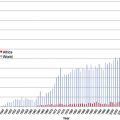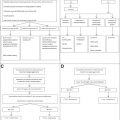Anemia is an important cause of health loss. We estimated levels and trends of nonfatal anemia burden for 23 distinct etiologies in 188 countries, 20 age groups, and both sexes from 1990 to 2013. All available population-level anemia data were collected and standardized. We estimated mean hemoglobin, prevalence of anemia by severity, quantitative disability owing to anemia, and underlying etiology for each population using the approach of the Global Burden of Disease, Injuries and Risk Factors 2013 Study. Anemia burden is high. Developing countries account for 89% of all anemia-related disability. Iron-deficiency anemia remains the dominant cause of anemia.
Key points
- •
Anemia burden is high, affecting 27% of the world’s population—1.93 billion people—in 2013. Developing countries account for more than 89% of the burden.
- •
Preschool children and women of reproductive age are particularly affected by anemia.
- •
Iron-deficiency anemia is the dominant cause (≥60%) of anemia globally and in most populations, though there are important contributions from multiple other causes.
- •
Other important causes of anemia include hemoglobinopathies, infections, chronic kidney diseases, gastrointestinal and gynecologic conditions. Patterns vary with respect to age, sex, and geography.
- •
Individual- and population-level interventions aimed at reducing burden should take into account the context-specific epidemiology of anemia to maximize effectiveness and avoid potential harm.
Stay updated, free articles. Join our Telegram channel

Full access? Get Clinical Tree







